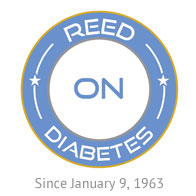The U.S. government has a history of helping and protecting disadvantaged and disabled citizens. Legislation dates back to 1917 and the benefits continue today. As I prepared for college in 1977, the Vocational Rehabilitation Bill of 1973 offered help – because I had diabetes.
My mother attended a Diabetes in Youth meeting in Kansas City (DIY was a 1970s charitable group that later folded – think of it as similar in purpose to today’s JDRF) and heard that people with diabetes were eligible for the benefits in the bill. In a partnership with the Federal government, the program was administered by state agencies. I completed an application and then met with a counselor in the Kansas Vocational Rehabilitation office. I was approved and received a grant that covered the cost of tuition and books for my undergraduate studies. I met with the counselor after each semester to review my progress and did this for all eight semesters in college.
As I prepared to graduate in 1981, I met with my counselor for a final visit. I thanked her for her time and help with my grant. She offered congratulations and said my timing was good as funding for the program was being reduced. Going forward, she doubted that an application similar to mine would be approved. What I didn’t know during college is that …
The bill also contained a section – Section 504 to be exact – that provides a level playing field for those learning with diabetes. How? Diabetes is now included in the list of impairments that may substantially limit major life activities. And the description of life activities includes learning (**).
Thanks to the Vocational Rehabilitation Bill of 1973, students with diabetes that attend a school receiving financial assistance from a U.S. department or agency (almost all schools do) have rights to a personalized 504 plan. The plan includes not having to take an exam when blood sugar is low or high (*), permission to eat whenever and wherever necessary (including eating lunch at an appropriate time with enough time to finish eating), permission to take extra trips to the bathroom and more.
I want to extend my appreciation to the U.S. governments and courts for passing and interpreting legislation in a way that provides those with diabetes the right to learn on a level playing field with their peers. I also want to thank the counselors and staff that assist in developing and administering these 504 plans.
(*) I can’t tell you how many times I was in class – trying to learn or proving that I had – where low blood sugar won out over either of those objectives.
(**) How did I feel about all of this? Of course the money covering books and tuition was appreciated and helped fund my education. But I struggled with the thought of qualifying for a government program aimed at helping those needing rehabilitation. Did my diabetes label me as someone needing rehabilitation? Was there something wrong with me that needed to be fixed? As a chronic condition, could diabetes be rehabilitated?
For the record, I’ve never considered my diabetes a disability. But I agree with the language in Section 504. It specifically calls out diabetes as an impairment that limits one or more major life activities, including learning. Here’s narrative from the US Health & Human Services Department Section 504 Fact Sheet:
Who Is Protected from Discrimination?
Section 504 protects qualified individuals with disabilities. Under this law, individuals with disabilities are defined as persons with a physical or mental impairment which substantially limits one or more major life activities. People who have a history of, or who are regarded as having a physical or mental impairment that substantially limits one or more major life activities, are also covered. Major life activities include caring for one’s self, walking, seeing, hearing, speaking, breathing, working, performing manual tasks, and learning. Some examples of impairments which may substantially limit major life activities, even with the help of medication or aids/devices, are: AIDS, alcoholism, blindness or visual impairment, cancer, deafness or hearing impairment, diabetes, drug addiction, heart disease, and mental illness.
**************

